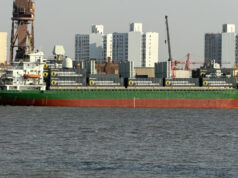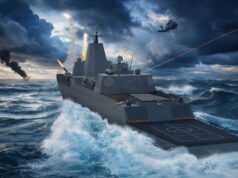A Russian jet has crashed in the Mediterranean Sea after attempting to land on the Russian carrier Admiral Kuznetsov.
Three Russian MiG-29 jets took off from the carrier bound for Syria however, once airborne, one of the Russian jets reportedly experienced mechanical difficulties and attempted to return to the carrier.
A Russian rescue helicopter rescued the pilot according to Russian officials.
In October, the Admiral Kuznetsov, accompanied by seven other Russian navy vessels including the nuclear-powered battlecruiser Pyotr Velikiy and two Udaloy class destroyers, set sail from Kola Bay for the Mediterranean.
The deployment was reportedly moved back to October due to a lack of carrier-qualified pilots for the new variant of the MiG-29 adapted for carrier operations, the MiG-29KR.
The MiG-29K is heavily modified for naval use compared to earlier aircraft. The airframe and undercarriage are reinforced to withstand the stress experienced upon landing.
Folding wings, an arrestor hook, and catapult attachments were added for carrier operations; the aircraft’s undercarriage track was also widened.
The MiG-29K, unlike the early MiG-29, can both conduct aerial refueling and “buddy” refuel other aircraft.
The Admiral Kuznetsov reportedly deployed with 15 fighters and more than ten helicopters.
While designated an aircraft carrier by the West, the design of Admiral Kuznetsov implies a mission different from that of either the United States Navy carriers or those of the Royal Navy.
The term used by her builders to describe the Russian ship is “heavy aircraft-carrying missile cruiser”.













